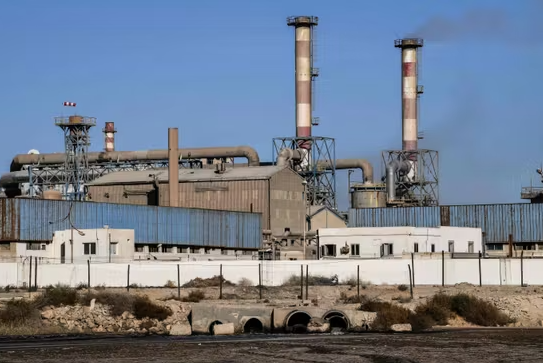Productive ecosystems help mitigate climate change, but countries must prevent the exploitation of local communities.
Africa is bearing the full brunt of climate change, both on its coasts and inland. Innovative policies are urgently needed. Blue carbon markets offer a mitigation solution that raises funds while preserving blue ecosystems. However, African countries need to be cautious and carefully weigh up the pros and cons.
Blue carbon markets can generate funds for the conservation of marine areas and underwater life. These ecosystems resist climate change thanks to mangroves, marshes and seagrass beds. Blue carbon markets, which are still underdeveloped, have enormous potential for expansion, as awareness grows of the role of coastal ecosystems in carbon sequestration, and the need for funds to meet sustainability targets. These markets are set to grow as industrial companies seek to offset their carbon emissions.
Blue carbon markets aim to reduce carbon footprints through coastal restoration and preservation projects, financed by the sale of carbon credits. Each carbon credit represents one tonne of carbon dioxide (CO2) emissions removed from the atmosphere. The carbon credits purchased are generated by the conservation and restoration of coastal and marine ecosystems to mitigate the effects of climate change. These transactions involve the quantity of CO2 sequestered, measured in metric tons, and the price per ton of CO2.
Africa enjoys a unique privilege. Its coasts boast some of the world’s most productive blue carbon ecosystems for marine life, as well as important natural carbon sinks that capture and store significant quantities of carbon in their soils, roots and plants.
Climate change weakens ocean carbon sinks
The ocean is mankind’s greatest « climate ally », thanks to two primary mechanisms: the solubility pump and the biological pump.
The sea absorbs CO2 from the atmosphere through the solubility pump process, transforming it into dissolved inorganic carbon. It is transported to depth by ocean currents. While ecological systems are self-regulating, increasing human-induced environmental change has altered the solubility pump. This has resulted in an increase in CO2 uptake by the sea, and an impact on ocean circulation, the distribution of marine ecosystems and climate patterns.
In the biological pump mechanism, phytoplankton (tiny ocean plants) transform CO2 into organic matter through photosynthesis. This organic carbon is transported to the ocean depths and stored away from the atmosphere for long periods.
These phenomena are essential for countries whose food and livelihoods depend on marine ecosystems. They contribute to the health and productivity of the ocean by isolating carbon and ensuring the balance of nutrients needed to sustain marine life and the industries that depend on it.
Land-based carbon credit agreements lead to land grabbing and greenwashing
However, climate change is weakening these carbon sinks. There is an urgent need for action and financing, particularly in developing countries where environmental considerations are often neglected.
In this situation, blue carbon markets could save Africa or lose it. It is too early to quantify the impact of this trade, and it would be advisable to draw inspiration from the agreements on terrestrial carbon credits in order to avoid the same mistakes.
There are four major concerns. Firstly, the terrestrial carbon credit agreements reveal that the blue carbon initiatives would not benefit Africa as a whole on an equitable basis. The Green Carbon project in Kenya’s Mau Forest shows how indigenous communities have been evicted in the name of environmental protection. These agreements have often led to the exploitation of vulnerable communities, and raised concerns about low prices, land grabbing and greenwashing.
The second concern is the lack of transparency and scientific credibility of the blue carbon market. As this field of research is new, local data may be insufficient. Countries need to invest in accurate valuation and empirical research to better understand their blue carbon assets.
Countries must invest in empirical research to identify their blue carbon assets.
Thirdly, this mercantile rush for carbon raises ethical questions about the beneficiaries. Access to resources and the livelihoods of artisanal fishermen and coastal communities are restricted. The rush also threatens the intrinsic value of ocean resources, the bedrock of the cultural identities of coastal and indigenous communities. The loss of fish breeding grounds, such as mangroves, threatens food security. Without rigorous management and monitoring, these initiatives can inadvertently lead to abuse of local communities.
Finally, skepticism about blue carbon markets is based on climate injustice and global inequality. Some describe these markets as a form of « climate colonialism », where richer countries offset their emissions by buying carbon credits from poorer countries. However, carbon markets alone will not stem the climate crisis. Rich countries must also reduce their consumption of fossil fuels. These markets risk perpetuating inequalities and exploiting the resources of less-developed regions.
Blue carbon markets are not systematically harmful or abusive. African states should strive to maximize the benefits while minimizing the risks for their populations, the future beneficiaries.
The creation of national and regional centers of excellence dedicated to research, rigorous monitoring and the use of modern technologies enhances the credibility of blue carbon projects. Kenya’s Marine and Fisheries Research Institute is a perfect example. So is Mikoko Pamoja, the world’s first community-based project to market carbon credits for mangrove conservation and promote sustainable livelihoods. This project has contributed to nature conservation and improved community well-being.
To avoid climate colonialism, ensure climate justice and sustainable blue carbon management, power imbalances must be addressed, transparency improved and strong community safeguards established.
Inclusive climate finance approaches should prioritize social justice, environmental integrity and community empowerment. They must include the voices of indigenous peoples, women and youth, and foster local buy-in and partnership to be more credible.


